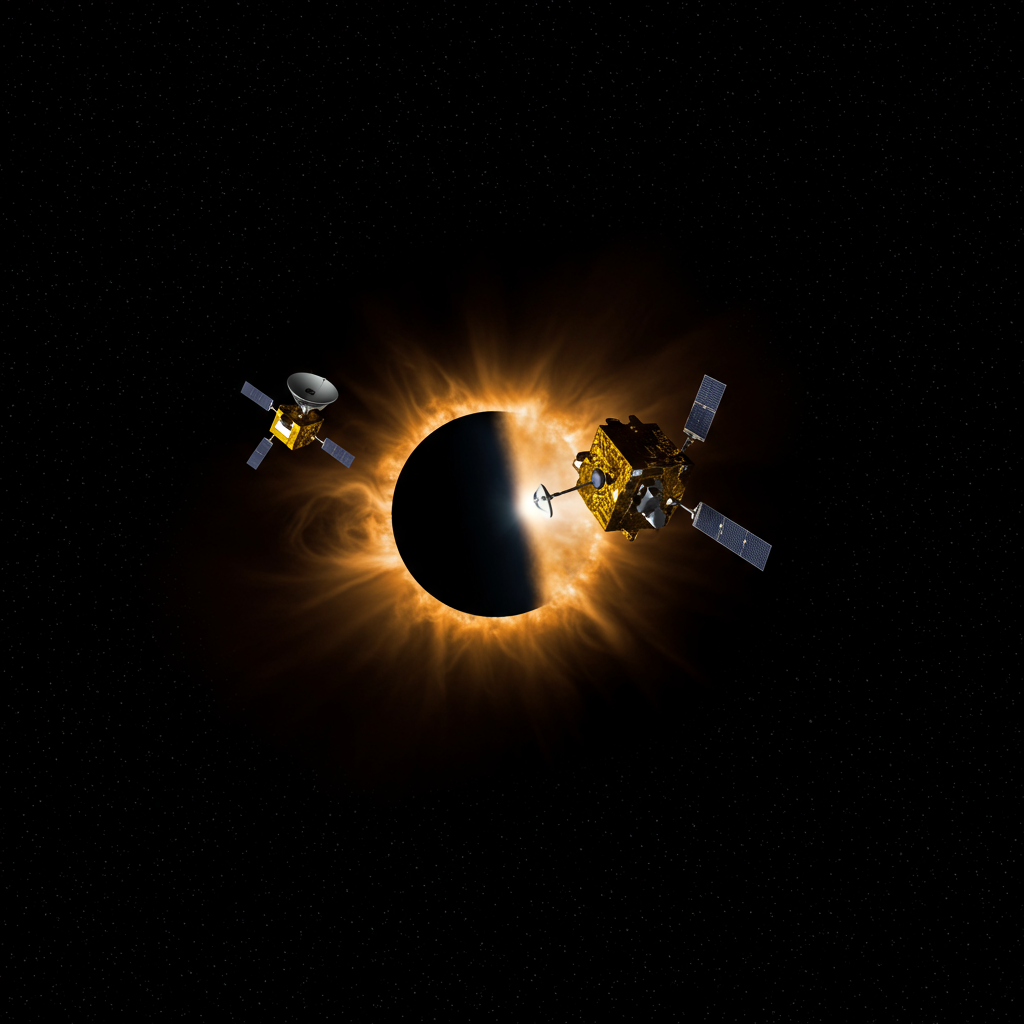The universe holds secrets about its earliest moments, hidden across unimaginable distances. Now, astronomers have made a significant leap in uncovering these mysteries by discovering the most distant “radio mini-halo” ever observed, located in a galaxy cluster so far away that its light has traveled for 10 billion years to reach us.
This groundbreaking find offers an unprecedented glimpse into the powerful, hidden forces that shaped the cosmos in its infancy.
What is a Radio Mini-Halo?
A radio mini-halo isn’t a visible object in the traditional sense, but a vast cloud of highly energetic charged particles residing in the space between galaxies within a cluster’s core. These particles, accelerated to near-light speeds, emit radio waves that powerful telescopes can detect across billions of light-years. Despite the “mini” in the name, these structures can span millions of light-years, showcasing the immense scale of energy at play within galaxy clusters.
Why This Discovery is So Important
Finding this mini-halo at such an extreme distance is a monumental step for several reasons:
Record-Breaking Distance: At 10 billion light-years away, this is the most distant radio mini-halo ever detected, doubling the previous record. This pushes our observational reach further back in time.
Early Universe Energetic Processes: The discovery reveals that entire galaxy clusters, the largest known structures in the cosmos, were already permeated by high-energy particles and shaped by powerful energetic processes only a few billion years after the Big Bang. This was a period when the universe was still forming its first massive structures.
Glimpse into Cosmic Evolution: Understanding how energy moved and influenced matter in these early galaxy clusters helps astronomers piece together the timeline and mechanisms of cosmic evolution. It provides a rare look at what these colossal structures were like shortly after their formation.
Connecting to Other Mysteries: This discovery fits into a broader picture being painted by new observations from telescopes like the James Webb Space Telescope (JWST), which are revealing unexpectedly massive galaxies and black holes existing surprisingly early in the universe. These findings are challenging existing theoretical models and highlight how dynamic and energetic the early cosmos truly was. Dr. Roland Timmerman from Durham University, a member of the research team, expressed astonishment at detecting such a strong radio signal from this distance, noting it confirms that these powerful particles and their creation have played a role in shaping galaxy clusters for nearly the universe’s entire history.
The Puzzle: Where Did the Energy Come From?
Scientists are currently exploring two primary candidates for the source of these energetic particles forming the mini-halo:
- Supermassive Black Holes: Galaxies within a cluster often host supermassive black holes (SMBHs) at their centers. These powerful objects can eject colossal jets or streams of high-energy particles into surrounding space. Observations of present-day galaxy collisions, for instance, show how active SMBHs (quasars) can blast nearby galaxies with intense radiation and particles, disrupting their gas. The sheer scale of recently discovered ultramassive black holes, some billions of times the Sun’s mass, underscores the immense power available from these sources. However, it remains a puzzle how particles ejected from individual black holes could travel so far through the vastness of the cluster while retaining enough energy to form such a gigantic, diffuse mini-halo.
- Cosmic Particle Collisions: The space within a galaxy cluster’s core is filled with hot plasma. Another hypothesis is that charged particles within this plasma collide with each other at speeds approaching that of light. These high-speed impacts could shatter the particles, generating the highly energetic particles observed in the mini-halo.
The ongoing research aims to determine which of these mechanisms, or perhaps a combination, is responsible for fueling these distant structures.
How the Mini-Halo Was Detected
This record-breaking detection was made using the Low Frequency Array (LOFAR). LOFAR is not a single telescope, but an expansive network comprising over 100,000 small antennas distributed across eight European countries, working together as a single, immensely powerful radio telescope. This network’s ability to capture faint, low-frequency radio signals from the most distant corners of the universe was key to spotting the mini-halo’s emission.
The international research effort was led by the University of Montreal in Canada and included contributions from institutions across Europe and around the world, including experts like Dr. Roland Timmerman from Durham University.
Looking Ahead
The findings from this discovery have been accepted for publication in the prestigious Astrophysical Journal Letters. This record-breaking mini-halo serves as a critical piece of the puzzle in understanding the energetic life of the early universe’s largest structures. As new generations of telescopes continue to explore cosmic history, observations like this provide vital clues, helping scientists unravel the complex interplay of matter, energy, and gravity that led to the universe we inhabit today.




